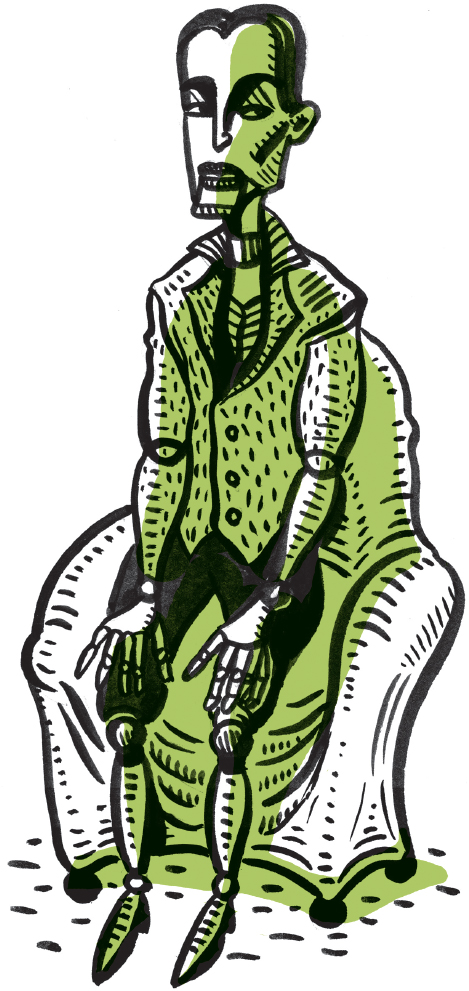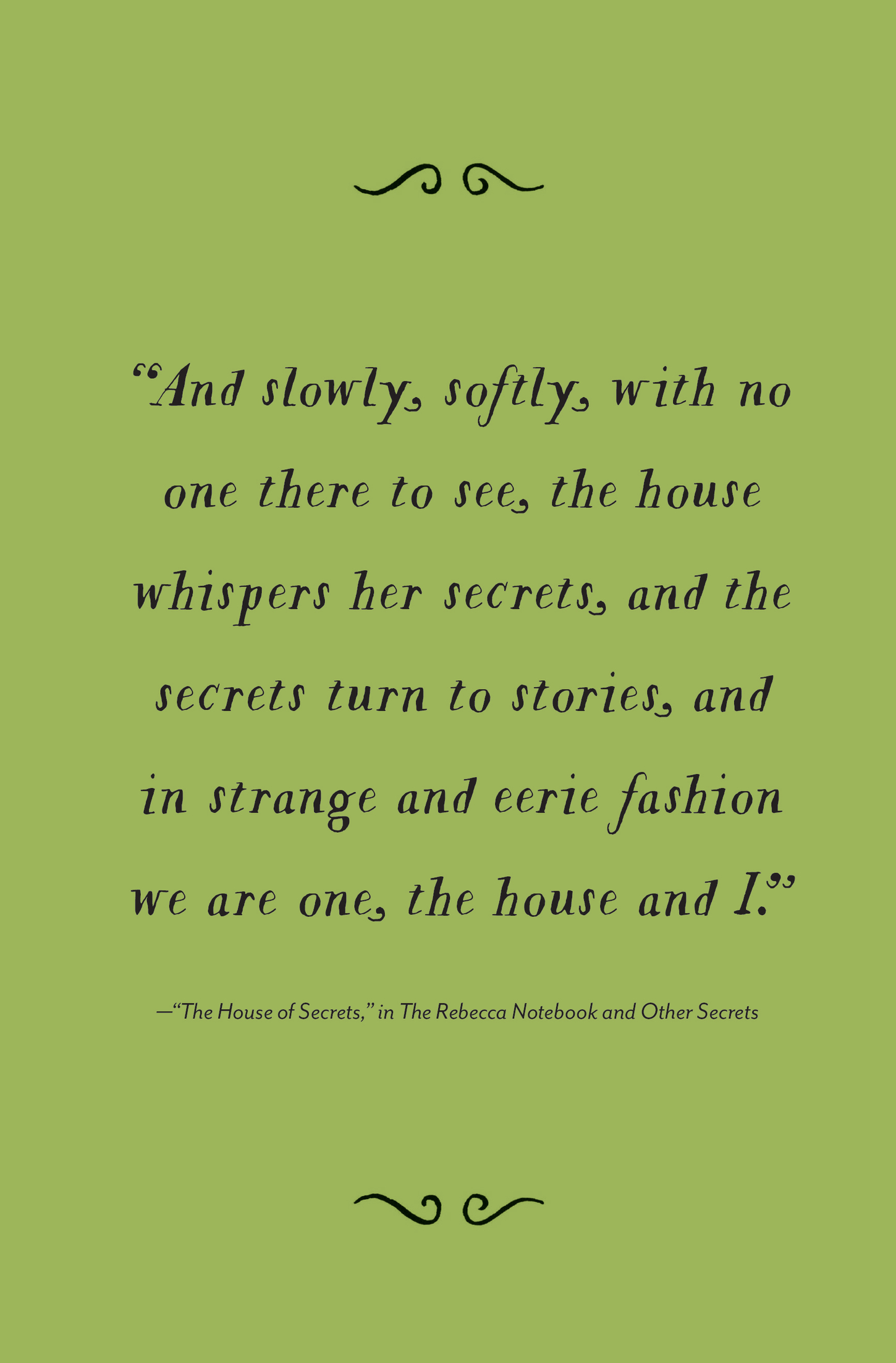 The Dame of Dread
The Dame of Dread 
Daphne du Maurier
Unusually independent women. Dangerous obsessions. A flock of seagulls. Sexual intimacy with a male robot. Many women named Rebecca. Welcome to the mind of Daphne du Maurier.
Du Maurier was primed for a literary career from birth. Born in 1907 in London to a wealthy couple with a bohemian lifestyle, du Maurier grew up surrounded by riches and art. Her grandfather was the famed cartoonist and author George du Maurier, known for his work in the British satire publication Punch and his novel Trilby (Osgood, McIlvaine, 1895), which introduced the world to the character of Svengali. Her father, Gerald du Maurier, was a theater critic and an actor. Her mother, Muriel Beaumont, was an actress who often brought the dramatic arts home; Daphne and her two sisters grew up to write or to paint. Maybe the most intriguing detail is a connection to another literary legacy: Daphne’s cousins were the Llewelyn Davies boys, who famously inspired J. M. Barrie while he was creating the character Peter Pan. Barrie and other writers were often visitors to the du Maurier family home in London during Daphne’s childhood.
She was an unusual child. Though often called a tomboy, she mused that she may have been a boy soul placed in the wrong body (calling herself a “disembodied spirit”). As an adult, du Maurier often said that she had two personas: the female energy that she presented to the world, and a male energy, which she called “lover,” that controlled her writing. Many critics have pointed to her tendency to use male narrators, even in stories with a female protagonist. She had early crushes on women and same-sex relationships (though she despised the term “lesbian”) prior to her marriage to Frederick “Boy” Browning, a military man from a middle-class background. Rumors abound of same-sex flirtations even after her marriage, including an unrequited crush on her publisher’s wife, Ellen Doubleday, and a relationship with the actress Gertrude Lawrence.
Though she kept her maiden name for her writing career, du Maurier became Lady Browning in 1946, when her husband was bestowed the title of Sir Browning and made a Knight Commander of the British Empire for his service in the South East Asia Command during World War II. In 1969, she was elevated to Dame Daphne du Maurier DBE, Fellow to the Royal Society of Literature.
The couple had three children, and du Maurier was the breadwinner, supporting the family with her writing. Her success eventually allowed for the purchase of Menabilly, a manor house in Cornwall, which provided the inspiration for Manderley, the setting of her most famous novel, Rebecca (Gollancz, 1938). Du Maurier’s marriage may also have inspired the plot. According to their youngest child, the union was far from ideal, and du Maurier worried that Boy was still in love with a former flame. Perhaps her real experience being haunted by her husband’s old love was transformed into the literal haunting of her fiction.
Birds and Dolls
Rebecca is a Gothic tale with domestic horror at its heart. The plot centers on a young wife—a shy, naive waif of a woman—who moves into a cold and vast mansion with her new husband. At first glance, the narrative appears to be typical ghost story fare, though deliciously steeped in Gothic elements: there’s a vicious servant who refuses to accept the new wife, a husband with a murky, and perhaps dangerous, past, and a haunted house with entire wings that are off limits to the protagonist (and the reader by proxy). But beneath the ghostly trappings await the complicated identities of the two Mrs. de Winters: the deceased, who was vivacious and outgoing but cruel and manipulative, and the living, who is shy and submissive but dangerously obsessed with the woman who came before her.
In Rebecca, the tension is not in what the husband might be hiding, but in whether the two female forces can learn to inhabit the same space. The struggle to belong is a common thread in du Maurier’s work; her female characters never quite fit into the roles they’ve been given, and often, as a result, pay the ultimate price. Though the novel was poorly received by critics, Rebecca earned du Maurier a National Book Award. The tale has become so popular that, some eighty years after its publication, it still sells around 4,000 copies a month.

Beyond du Maurier’s most enduring work, readers would be remiss to ignore her other writing, which pushed the boundaries of what female characters could do. Her short story “The Doll” (written when du Maurier was twenty-one and then buried in a sheaf of work rejected by editors, lost for nearly seventy years) tells the story of a woman—curiously also named Rebecca—who enjoys a life of luxury and independence, a life that she happens to share with a mechanical doll named Julio. Like the novel Rebecca, much of the story’s plot revolves around secrecy and the strangely cloistered life of the strong-willed and self-sufficient main character. The story is narrated not by Rebecca, but by one of her suitors, who is driven mad with jealousy and anger over her relationship with Julio. The unnamed narrator, who flies into a murderous rage when confronted with a love interest who rejects him, is the story’s most fascinating element. That a woman would not need him—that she doesn’t need any man for financial stability or sexual pleasure—confounds him. The story was republished in 2011 in an anthology of the same name by William Morrow Paperbacks.
Du Maurier often takes what would likely be clichés in the hands of lesser writers—haunted houses, environmental catastrophes—and cooks them down into terrifying morsels. A perfect example is “The Birds,” a short story that was first published in her collection The Apple Tree (Penguin, 1952) and is also found in Don’t Look Now (Doubleday, 1971). It is an environmental horror tale about birds that unleash a kamikaze-style killing mission on the denizens of Cornwall. The premise—apocalypse by seagulls—doesn’t quite inspire horror at first blush; yet du Maurier maintains a taut tension unlike any other thriller writer of her time. Alfred Hitchcock directed the film adaptation in 1963.
Of all the du Maurier adaptations, none garnered as much scandal as the 1973 Nicolas Roeg–directed film Don’t Look Now, mostly due to a graphic sex scene between its stars, Donald Sutherland and Julie Christie, which nearly earned the picture an X rating. Du Maurier’s story originally appeared in her collection Not after Midnight (Gollancz, 1971). It deals with the aftermath of the death of a child and the complicated grief that plagues a married couple, complete with psychic visions, a creepy shadow child, and a serial killer. Both the story and Roeg’s film remain among the best psychological thrillers ever written.
Reading List
Not to be missed: Rebecca lives up to its reputation. Follow that with My Cousin Rachel (Doubleday, 1951), which packs a whirlwind of questions about identity, intent, and intrigue; it is a predecessor to novels that blur the lines between victim and killer, good and bad, such as Gillian Flynn’s Gone Girl (Crown, 2012). Also highly recommended is the short story “Blue Lenses,” which is as thrilling as du Maurier’s novels. You’ll find it, along with “The Birds” and several other unsettling stories, in a reprint of the abovementioned collection Don’t Look Now: Selected Stories of Daphne du Maurier (NYRB Classics, 2008).
Also try: Du Maurier penned masterful Gothic romances, including Frenchman’s Creek (Doubleday, 1941) and Jamaica Inn (Doubleday Doran, 1936). Skip the 1939 Alfred Hitchcock adaptation of the latter—it’s universally panned as his worst movie. Stick with The Birds to get your film fix.
Related work: The thriller writer Patricia Highsmith is frequently compared to Daphne du Maurier, and for good reason: both are masters of suspense. Highsmith wrote horror as well, but those stories are not as frequently anthologized as her thrillers. If “The Birds” got under your skin, take a look at Highsmith’s snail stories “The Snail Watcher” (Gamma 3, July 1964) and “The Quest for Blank Claveringi” (Saturday Evening Post, June 17, 1967). Yes, snails are the predators. And, yes, Highsmith makes them terrifying. Both were collected in Eleven (Grove Press, 2011 reprint).
